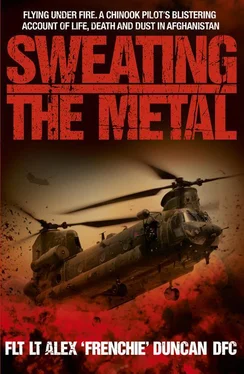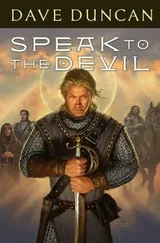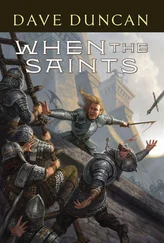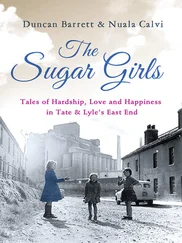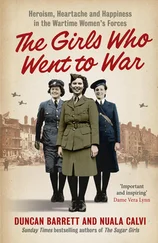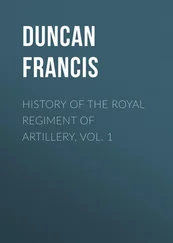‘Bet he goes to market tomorrow,’ said Alex.
‘Yeah,’ said Bob. ‘He’ll be going round saying, “Look everyone, I got magic light stick, I got magic light stick! I sell to you for good price!”’
‘Yeah,’ I said. ‘But imagine his surprise when they burn out and suddenly stop working! Someone’s going to come looking for him wanting their money back!’
So much for Alex’s TQ.
The beginning of May saw Alex, Bob, Coops and I down at Bastion on the HRF. First thing in the morning, some troops on a patrol out of Kajaki found a huge IED, so we were tasked with flying the EOD (bomb disposal) team up from Bastion to deal with it. Those guys have got guts; that’s real bravery to me, and all the money in the world wouldn’t convince me to do what they do. They’re seriously impressive – they went straight to the site of the IED, defused it, job done. That was a nice result.
When we returned to Bastion that afternoon, we swapped cabs and took over the IRT with the call sign Lobster Three One. All our kit stays on board the aircraft, whether we’re doing HRF or IRT. Weapons will be slung on to the seats, my water will be on the right and I always leave my flying helmet on a seat at the back right of the aircraft because that way if I’m late because I’ve been planning, the aircraft is turning and burning and I can just put it on as I run up the ramp. Then I’ll pull on my Mk61 and secure it, eject the clip from the 9mm on my chest, check it, holster my pistol, and finally jump into my seat, plug in and brief the boys.
The IRT is just a cab with the MERT on board and all their equipment in the back – oxygen, saline drips, drug packs, tubes, scalpels, defibrillators – basically everything they might possibly need to perform life-saving surgical interventions on the badly wounded and dying. It’s axiomatic that the victim’s chances of survival are greatest if they receive care within a very short period of time after a severe injury. The whole focus, the very raison d’être of the MERT, is to get the doctor and the med team there as soon as is humanly possible, and we shave off every minute, every second, we can. A minute saved at our end means a greater chance of survival for whoever we’re being scrambled to scoop and run. The injured will feel the touch of a doctor within an hour whether they are in camp or on the ground. There’s also a ‘Platinum 10 Minutes’ which is the preserve of the medics with the soldiers. They accompany them on patrol and live with them in the FOBs or PBs so British casualties will be seen by one of them within ten minutes and treated. That preliminary treatment really makes a difference.
Sometimes, the combat medics who patrol with the soldiers are so efficient there’s little for the MERT team to do once the casualties are loaded on. Take someone with a traumatic injury – they’ll apply a ‘cat’ (a combat tourniquet) and a first field dressing and they’ll have completely stopped any exsanguination (bleeding out). That’s something that guys were dying from just twelve months ago. The MERT team say casualties are coming on with beautifully applied first field dressings, and they are seeing patients who are already cannulated so they can take on fluids. While there’s always something for the MERT to do, often the hardest and most important bits have been done on the ground. That’s a massive improvement on last year and shows how the standard of medicine – and the overall awareness of the guys on the ground of basic first aid – has evolved.
When we switch from HRF, we can’t just say, ‘Right, we’re now IRT on this cab’ – we have to change cabs. So every two days we move all our kit across – weapons, bits of uniform, helmets, personal go kits etc. It takes about half an hour, which is a bit of a nightmare if a call comes in while we’re mid-transfer. So we make sure we’re on the radio at all times and if a shout comes in, one of the crew will go to get the details and the non-IRT crew will pull out all the stops to help the MERT team get their kit on board.
That day, pretty soon after we’d swapped, we got a shout to pick up a T1 from a spot just north-west of FOB Edinburgh – a British soldier suffering from heat stress. There was a convoy running between Now Zad and Musa Qala and when we came in all the guys were waving at us. I think they were enjoying the downtime to be honest – they were all logistics guys and these resupply convoys that have to go by road are massive undertakings with loads of vehicles involved, so it must get a bit tedious. They can only travel slowly and have to stop repeatedly to check for IEDs.
I landed on and the QRF guys ran out to defend us, although they were rather surplus to requirements given the firepower that ranged around us in the convoy. Basically, whenever our convoys leave the base, they always travel with their own force protection – an infantry unit travelling in a mix of relatively fast, armoured vehicles with heavy firepower. Also, most of the trucks in the convoy have guys on top cover manning .50 calibre machine-guns.
Anyway, we got the guy on board and I took off over the convoy and turned sharp left back to Bastion. It was 11:40 when I landed, so I did a quick debrief and we were back in the tent for 12:10. We just had time for a bit of lunch at the DFAC and then went back to the tent to chill out watching TV for bit.

At 13:30 the phone rings – we’ve got a shout. I pull myself out of the chair and put my boots on, grab my notebook and run for the JOC. Bob drives Coops and Alex to the cab and while they’re getting her going, he races back to find me in the JOC, where I’m taking down the details from the nine-liner. There’s not much; there’s been an IED strike at a grid east of where we’d picked up the T1 from the convoy a couple of hours earlier. We have five casualties to pick up – two T1s, two T2s and a T3. Bob drives us the short distance to the cab and parks the vehicle at the edge of the pan and we sprint for the ramp. I grab my helmet from its perch at the rear, put my vest on and check my pistol, and then I jump into my seat. Alex has got us turning and burning, so I plug in and brief the crew as we complete our last few checks.
Our Apache escort is already airborne as Alex says, ‘Pre-take offs good; ready to lift.’
‘Clear above and behind,’ says Bob.
‘Lifting,’ I say, pulling power, and the two Lycoming Turbo-shafts make light work of lifting us into the blindingly bright Afghanistan sky. I drop the dark visor on my helmet and immediately the picture improves. We’re airborne by 13:40.
As we’re running in, my mind starts to work over the detail. We’re flying to an area very close to where we’d lifted the guy with heat stress earlier that morning. There are no FOBs or PBs at or near the grid we’ve been given, so it has to be the convoy: one of the vehicles must have run over an IED.
Sadly, my fears are confirmed almost immediately as I look ahead. There on the nose in my 12 o’clock, I can see the same convoy that we visited earlier snaking away into the distance. At its head is a thick pall of black smoke drifting lazily into the windless Afghan sky, like a dirty smear on the windscreen of the cab. My heart sinks; it’s funny how little it takes for something to become personal, but this one most definitely is. We’d been to these guys already; we were their focus of interest for a while and they ours.
When we landed alongside them earlier, some of their guys came aboard to give us bottles of ice-cold water. We had a drink with them and Bob and Coops enjoyed a bit of banter with a couple of the guys. There was a connection. Now we’re back again in circumstances much less happy. We’re sat on the aircraft as the doctor heads off to meet the ground team bringing the casualties, dealing with the knowledge that, once again, the lives of several of our boys, who had been at the peak of physical fitness and in prime health, have changed forever. They got up that morning as they always did – just another day, doing what they’ve done so many times before. Some with thoughts of loved ones back home, others daydreaming about girls they’ve met on Facebook; probably wondering about stuff as mundane as what they’d be eating later. An ordinary day like any other suddenly turned into a personal hell for all those involved, courtesy of that most cowardly and indiscriminate of weapons: an IED.
Читать дальше
